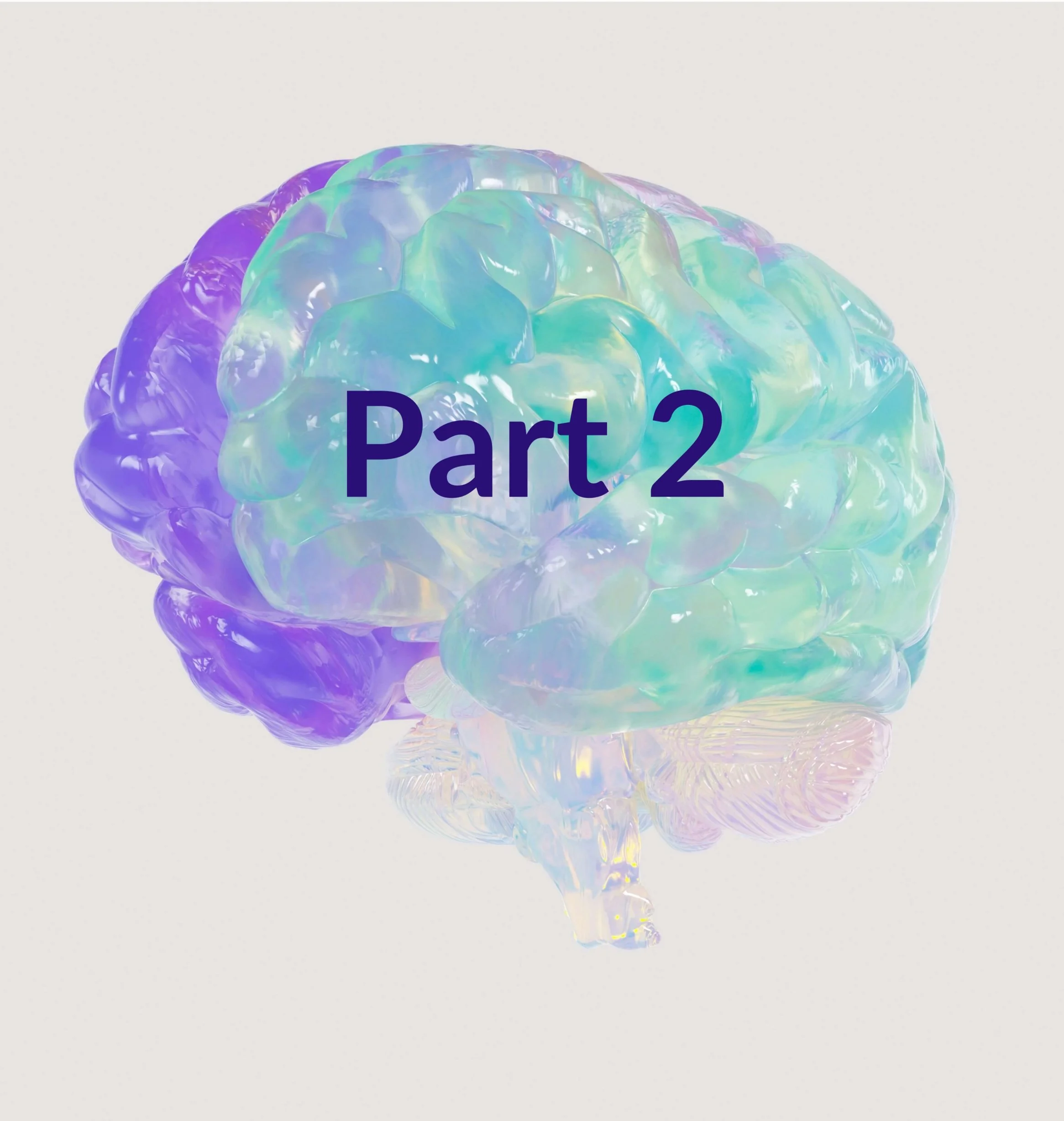EMDR Therapy Part 2: What to Expect Before Reprocessing Trauma
May 30, 2025 | By Carissa Hannum
This is a repost of our blog originally posted in 2024.
This is Part 2 of our EMDR therapy series. If you missed Part 1: Understanding the Process for Trauma, Anxiety & Eating Disorders, we recommend starting there for a full overview of how EMDR works. This post focuses on what happens before reprocessing begins specifically, the preparation and stabilization phases.
What Is EMDR Therapy?
EMDR (Eye Movement Desensitization and Reprocessing) therapy is a comprehensive, research-supported approach to psychotherapy. Originally developed to treat Post-Traumatic Stress Disorder (PTSD), particularly in military populations, it has since expanded to support a wide range of mental health conditions.
EMDR helps clients reprocess distressing life experiences that impact their daily functioning. Therapists trained in EMDR use structured protocols based on various psychological theories to address both single-event trauma and complex trauma symptoms. The goal is to reduce present distress by reprocessing memories in session, ultimately leading to healthier coping mechanisms.
To learn more about how EMDR works, please refer to my earlier blog post, EMDR Therapy Part 1: Understanding the Process for Trauma, Anxiety & Eating Disorders
Wait, There’s Work to Do Before EMDR Reprocessing?
The short answer is yes! There is some work that needs to be completed first to help clients be able to effectively reprocess distressing trauma memories. EMDR therapy follows an eight-phase model, and the actual reprocessing of traumatic memories doesn’t begin right away. However, even before reprocessing, there is a preparation stage that must occur. Initial stages are crucial to ensure clients have the emotional tools necessary for effective healing.
The 8 Phases of EMDR Therapy
Preparation Phase
1. Client History and Treatment Planning
2. Stabilization
Processing Phase
3. Assessment
4. Desensitization and Reprocessing
5. Installation
6. Body Scan
7. Closure
8. Reevaluation (takes place in the session after fully reprocessing the memory)
Why the Preparation Phase Matters So Much
Over the years, since completing my basic training in EMDR, I have noticed a misconception from some potential clients that they can just “jump right in” and start reprocessing memories right away! Although I completely wish that was the case and I appreciate the enthusiasm and willingness to heal from trauma, without proper preparation, starting EMDR can be quite dangerous or even escalate any comorbid psychiatric conditions. Jumping into reprocessing without adequate preparation can be risky especially for clients managing co-occurring conditions like substance use, eating disorders, OCD, anxiety, depression, or bipolar disorder which can escalate symptoms without proper preparation and stabilization skills.
In my experience, I’m more likely to use EMDR with clients after we’ve developed a solid therapeutic relationship and spent time in the preparation phase. What is important to remember for anyone engaging or wants to engage in EMDR is that the preparation stage is also a part of EMDR. The preparation stage is actually the most important part and can lead to a client’s ability to reprocess memories! Sometimes the preparation phase can take a few sessions with a client, but I have noticed that many clients who have experienced years of complex trauma may need a longer time (sometimes a few years) in the preparation stage to learn skills to help regulate emotions and create other strategies to remain present and mindful. Again, these strategies are all completely necessary to successfully reprocess a memory.
History Taking
The first step in EMDR is a detailed history-taking process. For anyone that has been in therapy before, it will not be surprising to hear that a therapist will need to collect a detailed client history to lead to successful EMDR reprocess of distressing trauma memories. During this time, the therapist is trying to get an accurate picture of each client, their life before and after traumas, how the trauma is leading to current symptoms, as well as how the individual would like to experience themselves in the future. This helps your therapist understand your life before and after trauma, the impact of trauma on your current symptoms, and your hopes for the future.
During this time, a client can expect to explore a few different parts of themselves. During this phase, I gather:
Trauma timelines and current symptoms
Resilient or “resourced” parts of you
Potential behavioral patterns to address (e.g., substance use, eating disorders, dissociation)
Triggers and emotional tolerance levels
This exploration creates a full picture of who you are, highlighting both strengths to build upon and obstacles that may need attention before reprocessing can begin.
All and all, during the history taking phase, I’m trying to explore what themes a client may be experiencing, how their situation has shaped both healthy behaviors that we want to increase and resource, as well as behaviors that although protective, could impact the clients’ ability to be present to reprocess memories and may be hurting them. After history taking, the therapist will move to the stabilization phase and create their first initial treatment plan.
Stabilization
The second phase focuses on stabilization where the therapist and client are working together on a few goals to make sure the client can have enough resources and emotional tools in their “therapy toolbox” to complete the EMDR reprocessing phase. There are a few goals during the stabilization phase and a few markers that therapist and client are working on to establish together, which are listed below.
Ability to Find Present-Moment Safety
One of the goals during the stabilization phase is to help clients create an ability to work towards finding calmness and a sense of safety within the therapeutic relationship as well as within daily life. This may mean working towards helping a client feel safe in their everyday environment. If basic needs like housing or physical safety are unmet, trauma processing is not appropriate yet. I also help clients build trust in our relationship and practice skills to remain grounded. In addition, the client and therapist have to work on creating therapeutic trust so that when a client goes into disturbing memories, they are able to keep themselves present and understand they are safe with each other in the moment versus back within their trauma. I will also teach my clients different skills to continue to be able to create this safety throughout the present moment through different strategies. Overall, I want to develop my client’s own confidence and develop their empowerment in themselves so that they can handle what comes their way emotionally in the present moment.
Emotional and Behavioral Stabilization
We address self-harming behaviors, substance use, and eating disorder symptoms using DBT, CBT, mindfulness, and container exercises. These tools increase emotional tolerance and decrease risk.
Clients learn to track dissociation and improve their ability to stay present. Mindfulness supports emotional regulation and prevents flooding during reprocessing. As I discussed earlier, many of my clients experience comorbid conditions, which cause intense emotions and at times, dangerous or self-destructive emotions and behaviors, such as substance use, eating disorder behaviors, SI/Self harm.
As part of the stabilization process, I want to give my clients a wide variety of emotional regulation skills so that we can stabilize and decrease these behaviors. Each EMDR therapist may do this in different ways, I tend to use DBT, CBT, mindfulness, and container exercises. These tools increase emotional tolerance and decrease risk. If a client is not willing to stabilize these behaviors, it would not be appropriate to begin EMDR reprocessing.
Mindfulness
Much like the ability to find calm or safety in the present moment, I want to help a client develop an ability to be mindful in the present moment. I also want clients to be able to track times they may not be as mindful due to dissociation. Teaching my clients to be able to track their mindfulness/dissociation, develop mindfulness skills, as well as mastering and understanding what may cause them to be their trauma triggers. The ability to track and become aware of dissociation patterns can allow clients to share with their therapist when they may begin to dissociate during reprocessing.
Mindfulness is a cornerstone during reprocessing and during EMDR reprocessing, the ability to use mindfulness can help clients re-regulate and stay present for the actual reprocessing of distressing experiences. Without mindfulness and present safety, a client may become flooded by memories that come up during reprocessing and not be able to continue.
Somatic Awareness
With any trauma, it is important to understand that trauma lands and lives within the body. The body really does feel and carry trauma every day. A huge part of EMDR reprocessing is exploring and allowing the emotions in the body to feel what it wasn’t allowed to feel at the time. For this reason, a client needs to begin living in their body, explore their physical sensations, and work towards embodiment. Understanding how our emotions manifest in our body and what our body is communicating is important to developing resilience in trauma work.
Adequate Resourcing
Resourcing in EMDR therapy helps clients realize and develop their own strengths. Some of these strengths may include the work outlined above, but some of the strengths also include discovering helpful attachment figures that can be called upon during reprocessing.
For instance, I have some clients that use a grandmother or a friend as part of their resources. In addition, I like to also develop a client’s capacity to feel their intuition or other more helpful emotions, such as their confidence or assertiveness. EMDR therapists frequently will utilize bilateral stimulation to help clients instill these traits, emotions, and/or coping skills within a client so that they can be called upon and help clients shift into a more “positive” and resourced state during a distressing memory.
Parts Work
Parts Works Therapy comes from a theory of therapeutic practice called Internal Family Systems, which helps us as people understand that we are all made up of different parts of ourselves. Specifically, I like to use parts work to help clients understand what parts of themselves have been developed because of their trauma, how these parts have helped them to remain resilient, but also how these parts can be both helpful and unhelpful.
Generally, I want to help clients understand and be able to work towards mindfully labeling how a part of themselves may be coming up, how it is protective, but also how we may need to ask that protective part to step aside to allow a full range of emotion to come up during EMDR reprocessing. Many clients that I work with experience extreme complex trauma and to survive and regulate emotions at the time of their trauma, they had to create parts to manage or soothe distressing emotions. With the ability to label these parts and behaviors as well as create new ways of tolerating emotions, clients develop confidence to feel their emotions during EMDR reprocessing.
As you can see, there are a lot of moving pieces during the stabilization phase. The goal remains the same: to allow each client to feel confident, safe, and empowered to make changes in the face of their trauma. This phase should not be rushed, but rather each client is unique in the amount of time they will need during this phase. Read our blog to learn more about Parts Work Therapy.
How Can I Prepare Myself for EMDR?
I tell all my clients that because EMDR allows the body and the mind to respond to trauma in a way that it could not at the time due to survival, the actual reprocessing can be distressing. It is important for EMDR therapists to appropriately resource clients with a multitude of skills to help clients deal with the thoughts, emotions, sensory input, body sensations, and memory networks that can be activated in the mind and body during reprocessing. It can be a lot!
Remember, it is perfectly acceptable and okay to need time to prepare for EMDR therapy. Here are a few things to work on in the meantime:
Allow yourself to go at your own pace. Each person is different. Don’t rush yourself into EMDR. Take your time to develop the skills that will lead to long term healing.
Practice Mindfulness. Take some time each day to practice mindfulness and meditations to practice shifting attention to the present moment.
Practice distress tolerance and emotional tolerance. Find skills with your therapist or with yourself that allow you to sit with and tolerate stimuli you may find distressing. Begin to live in your body.
Explore your physical sensations. How does your body react to triggers, what is your body communicating to you.
Create a support network. Develop a support network that you trust that you can rely on for support, while facing your trauma.
Learn about how trauma affects the brain and your body. If you are new to trauma therapy, receive some psychoeducation around how trauma affects the brain and therefore your behaviors.
Discover what could potentially block your recovery. Take some time to think about your beliefs or behaviors that may get in the way of wanting to heal.
Talk with a therapist. Talk with your therapist to explore if EMDR could be an appropriate part of your treatment.
How can you feel safe? Is there anything else that you need to feel safe and comfortable with your therapist if you are working toward memory reprocessing? What might you need more of, confidence, assertiveness, etc.? Take some time to think about this.
Final Thoughts
EMDR is a powerful and healing therapy when the proper groundwork is laid. The preparation phase is not a delay in healing, it’s the beginning of it. If you’re curious about EMDR or want support as you prepare, don’t hesitate to reach out. You deserve to heal at your own pace, with care and safety guiding the way.
This is Part 2 of our EMDR therapy series. If you missed Part 1: Understanding the Process for Trauma, Anxiety & Eating Disorders, we recommend starting there for a full overview of how EMDR works. This post focuses on what happens before reprocessing begins specifically, the preparation and stabilization phases.
Reach Out
If you’re considering professional support, we’re here to help. Please reach out to schedule a free, no-commitment consultation. There’s no fee and no obligation—just click the button below to get started.
You can also call or text us at 202-656-3681, or email us directly. Give yourself the opportunity for the support you deserve.







